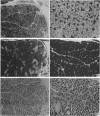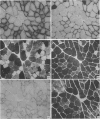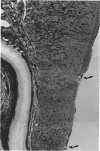Abstract
Histological, histochemical and morphometric methods were used to investigate the cricopharyngeus muscle in the guinea-pig and to compare it with the extensor digitorum longus and soleus muscles. The cricopharyngeus comprised uniformly small diameter fibres otherwise similar in appearance to those found in skeletal limb muscles. Several fibre type profiles were distinguished within the cricopharyngeus, all of which had homogeneously high oxidative activity, whilst the majority were histochemically fast (Type II). Muscle spindles were not observed in the cricopharyngeus muscles. Compared to the surrounding musculature the cricopharyngeus has a higher oxidative activity and may thus be suitably adapted for the maintenance of tonic contraction, forming a part of the upper oesophageal sphincter.
Full text
PDF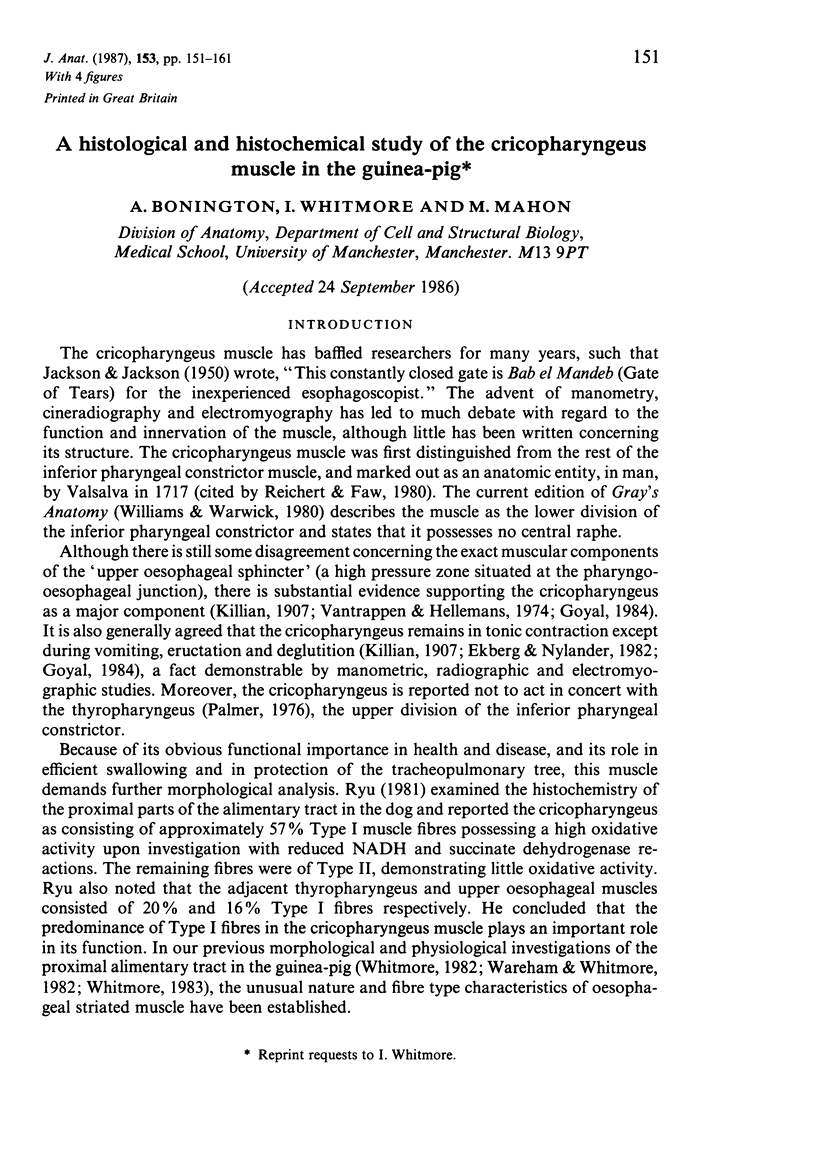
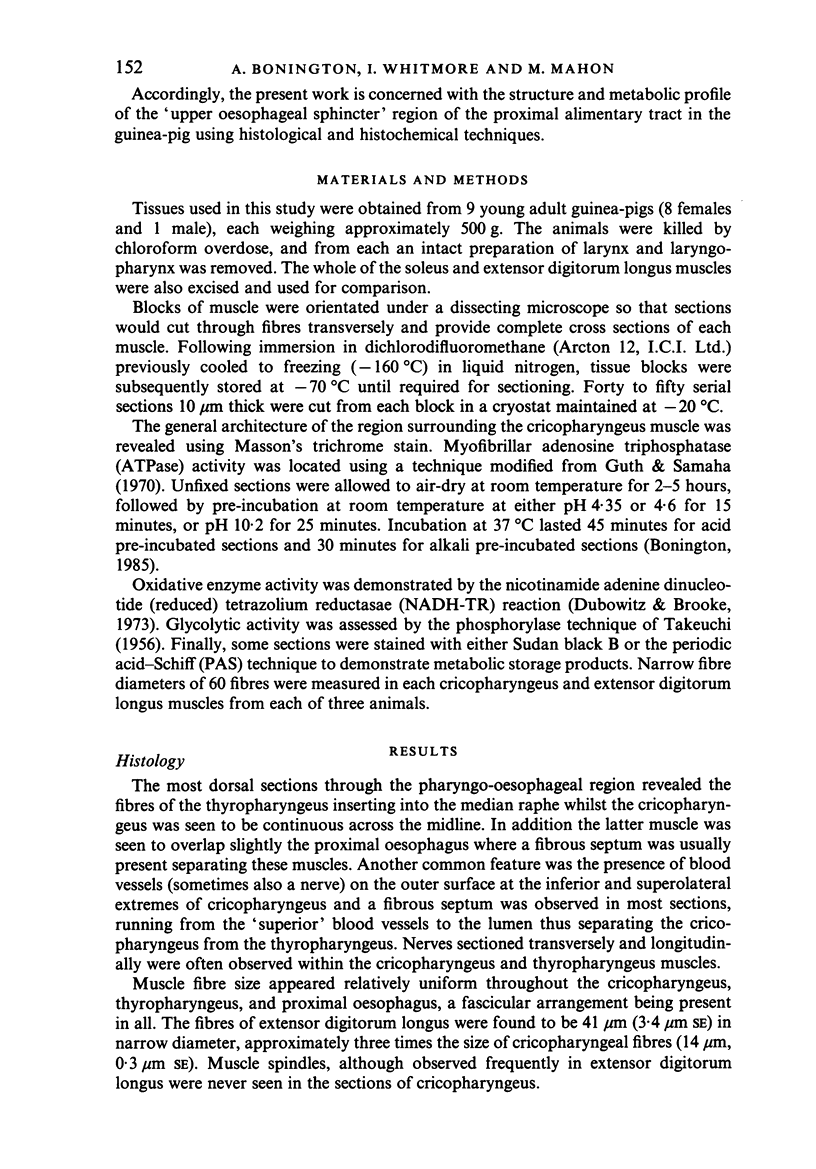
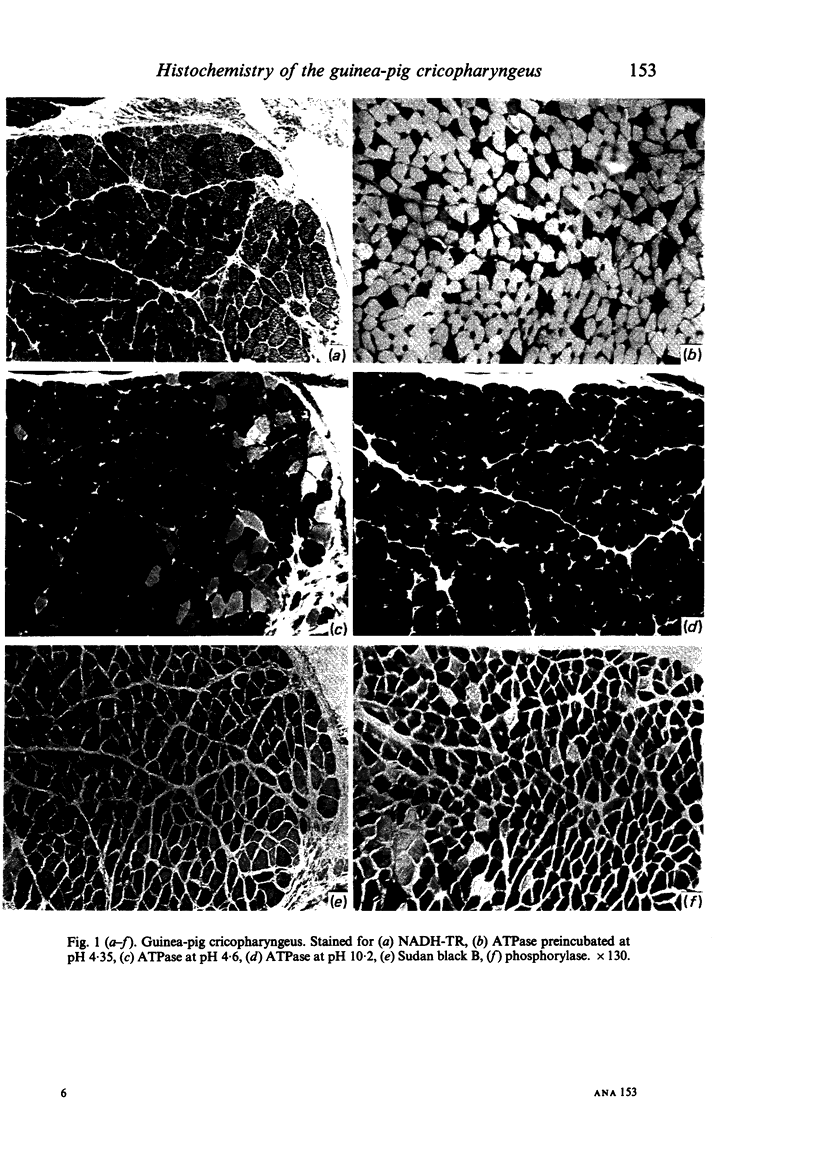
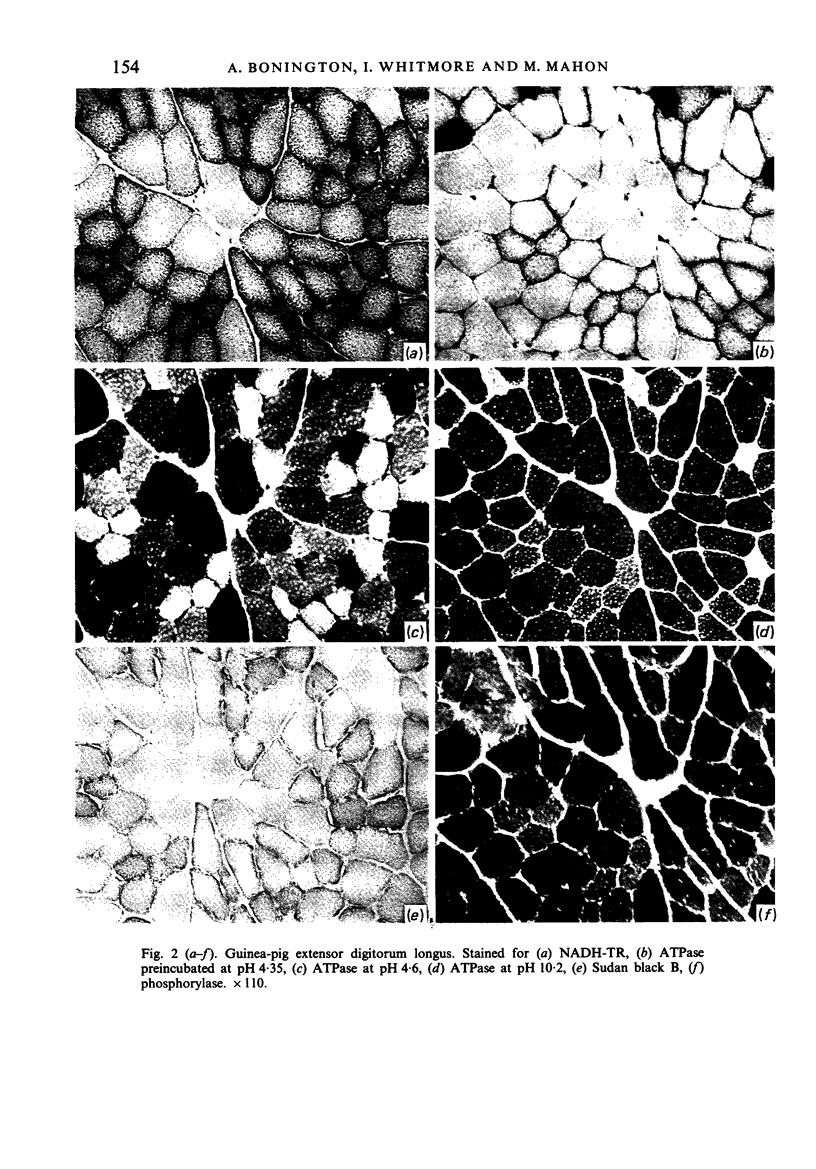
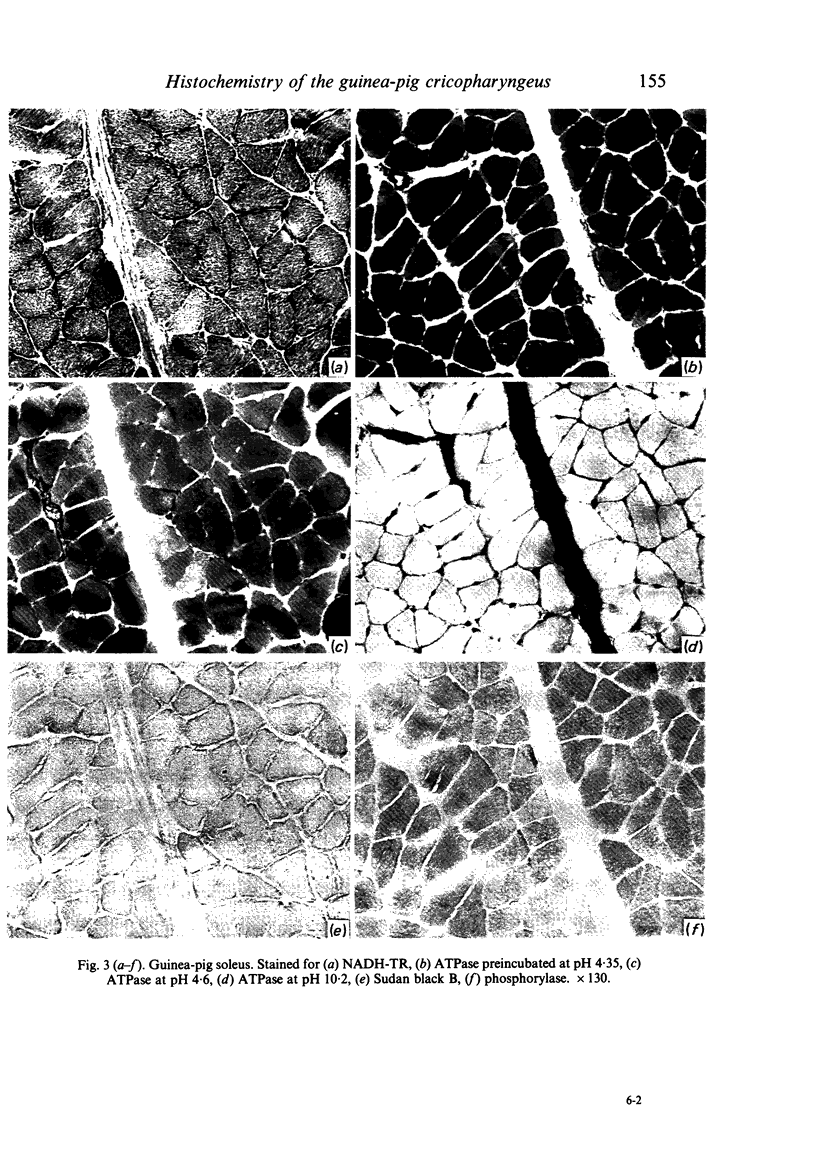
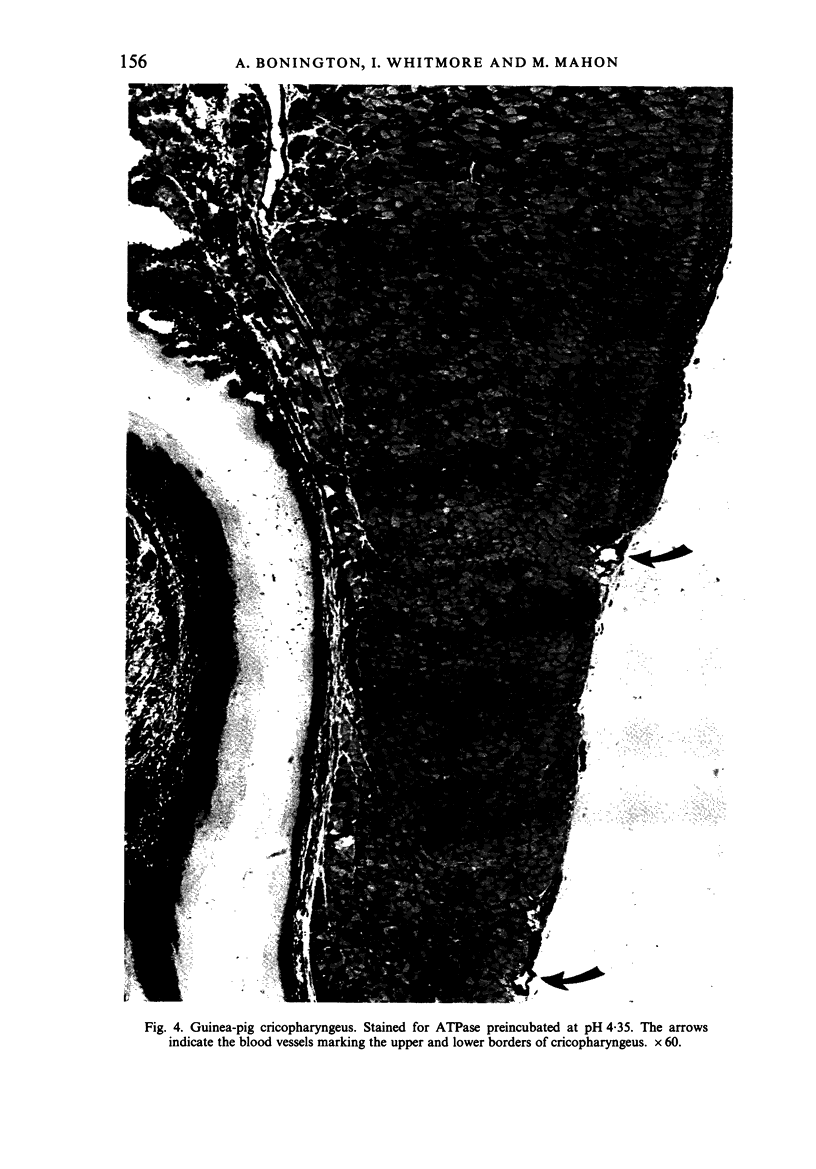
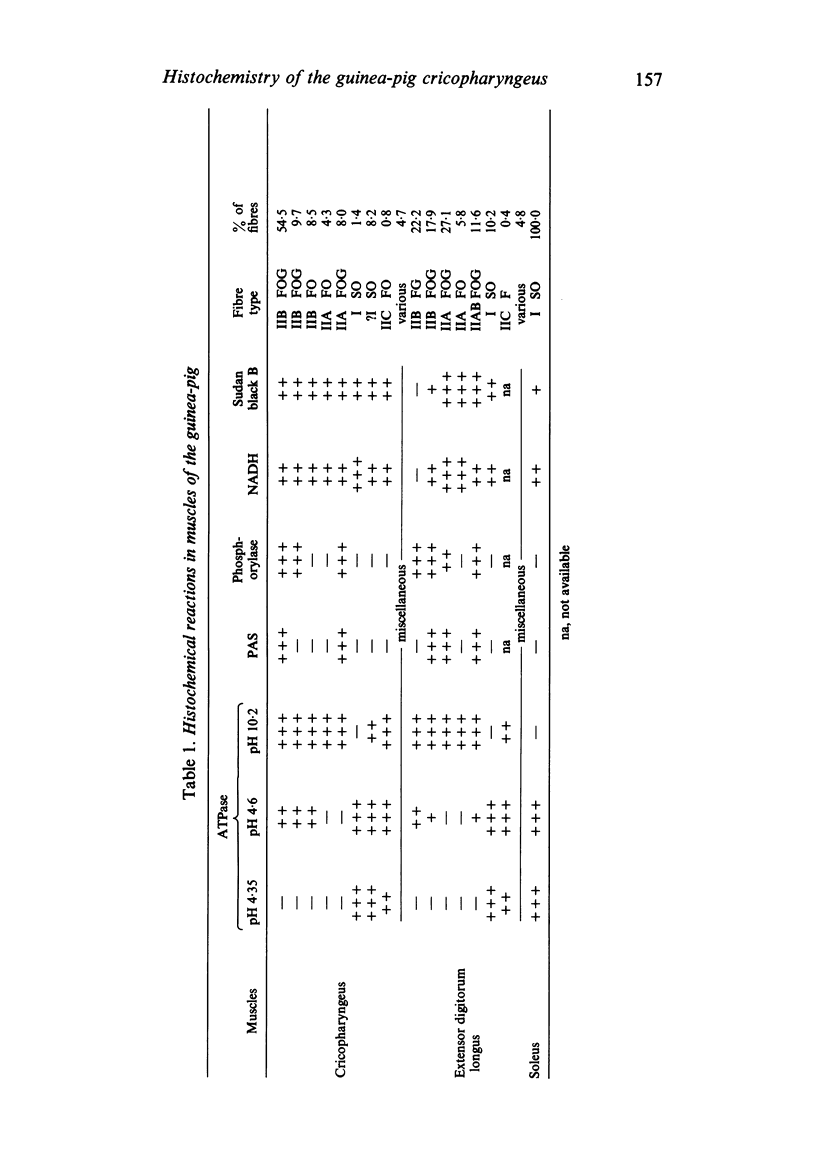
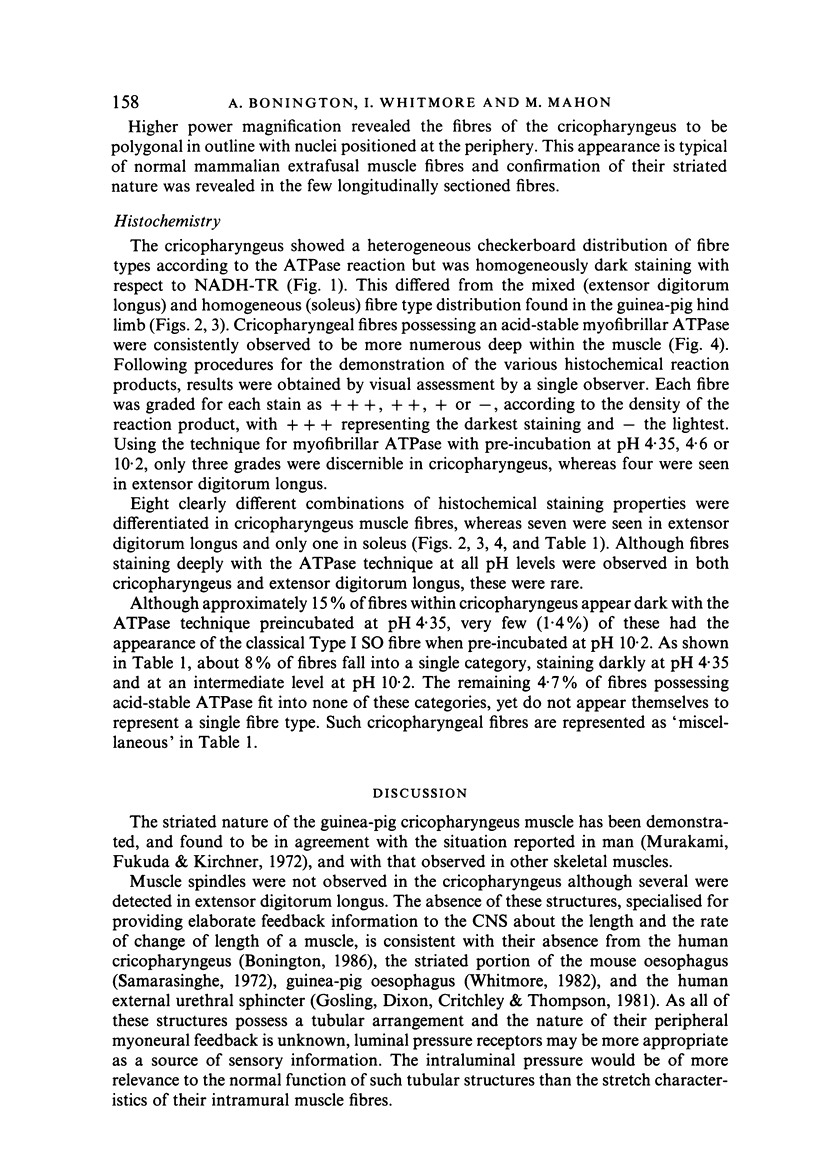
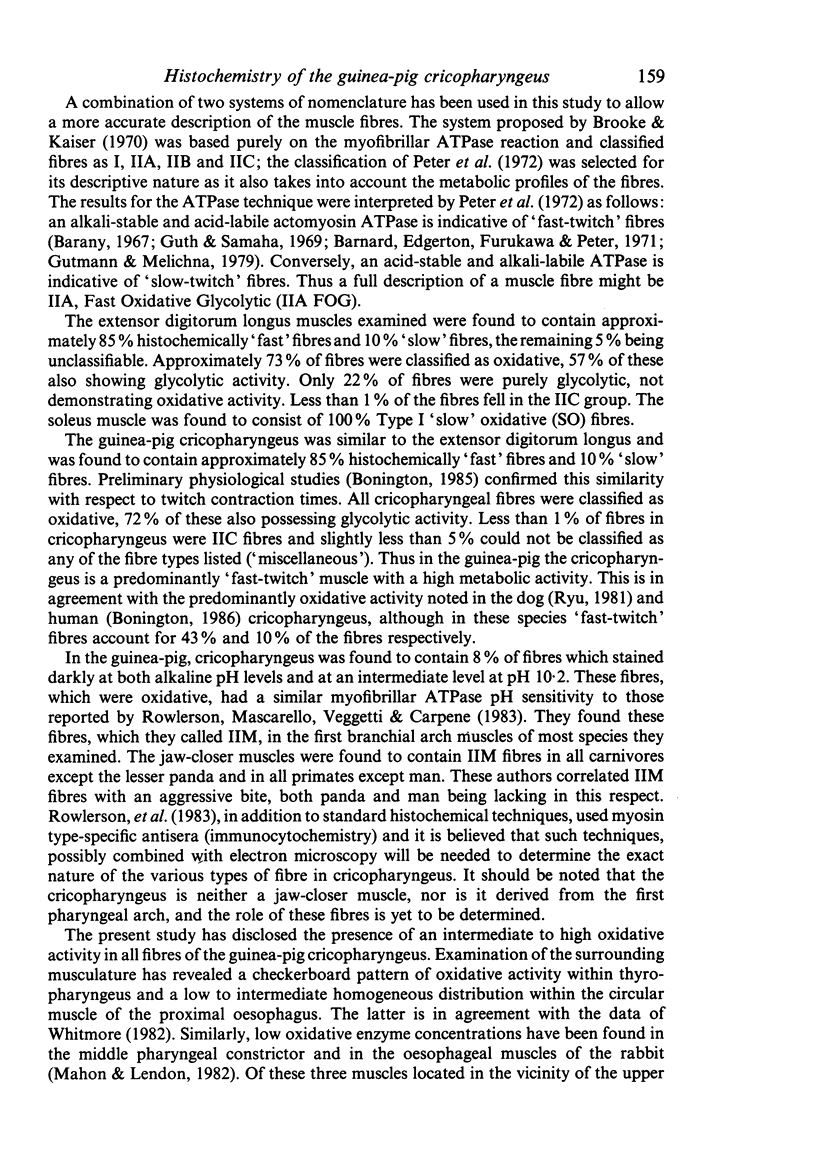
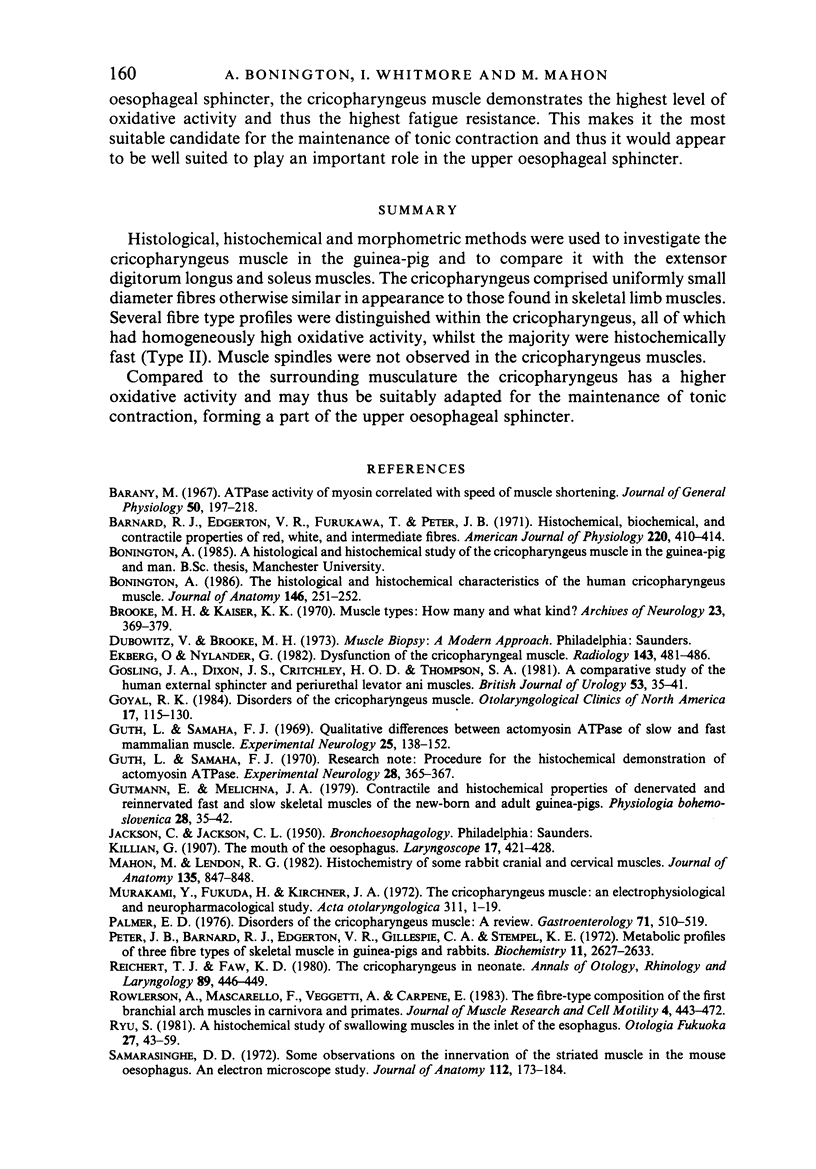
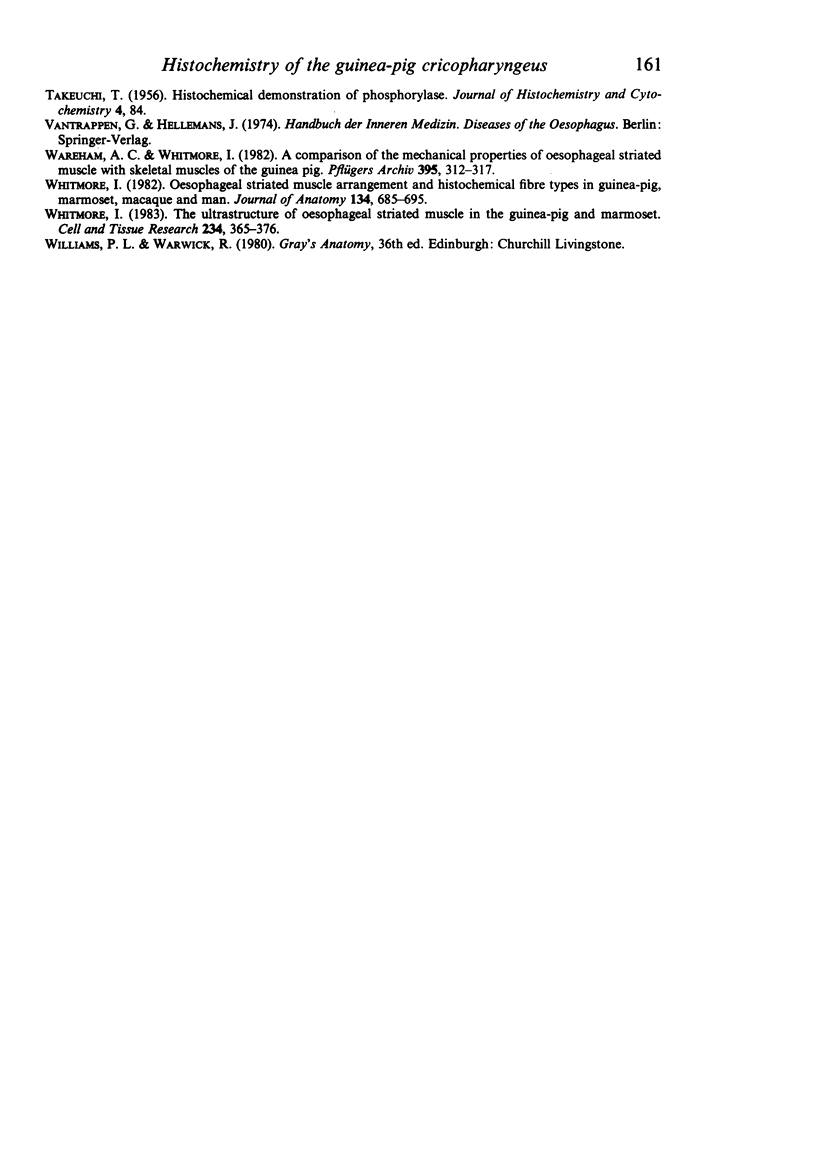
Images in this article
Selected References
These references are in PubMed. This may not be the complete list of references from this article.
- Barnard R. J., Edgerton V. R., Furukawa T., Peter J. B. Histochemical, biochemical, and contractile properties of red, white, and intermediate fibers. Am J Physiol. 1971 Feb;220(2):410–414. doi: 10.1152/ajplegacy.1971.220.2.410. [DOI] [PubMed] [Google Scholar]
- Brooke M. H., Kaiser K. K. Muscle fiber types: how many and what kind? Arch Neurol. 1970 Oct;23(4):369–379. doi: 10.1001/archneur.1970.00480280083010. [DOI] [PubMed] [Google Scholar]
- Bárány M. ATPase activity of myosin correlated with speed of muscle shortening. J Gen Physiol. 1967 Jul;50(6 Suppl):197–218. doi: 10.1085/jgp.50.6.197. [DOI] [PMC free article] [PubMed] [Google Scholar]
- Ekberg O., Nylander G. Dysfunction of the cricopharyngeal muscle. A cineradiographic study of patients with dysphagia. Radiology. 1982 May;143(2):481–486. doi: 10.1148/radiology.143.2.7071351. [DOI] [PubMed] [Google Scholar]
- Gosling J. A., Dixon J. S., Critchley H. O., Thompson S. A. A comparative study of the human external sphincter and periurethral levator ani muscles. Br J Urol. 1981 Feb;53(1):35–41. doi: 10.1111/j.1464-410x.1981.tb03125.x. [DOI] [PubMed] [Google Scholar]
- Goyal R. K. Disorders of the cricopharyngeus muscle. Otolaryngol Clin North Am. 1984 Feb;17(1):115–130. [PubMed] [Google Scholar]
- Guth L., Samaha F. J. Procedure for the histochemical demonstration of actomyosin ATPase. Exp Neurol. 1970 Aug;28(2):365–367. [PubMed] [Google Scholar]
- Guth L., Samaha F. J. Qualitative differences between actomyosin ATPase of slow and fast mammalian muscle. Exp Neurol. 1969 Sep;25(1):138–152. doi: 10.1016/0014-4886(69)90077-6. [DOI] [PubMed] [Google Scholar]
- Guttmann E., Melichna J. A. Contractile and histochemical properties of denervated and reinnervated fast and slow skeletal muscles of new-born and adult guinea-pigs. Physiol Bohemoslov. 1979;28(1):35–42. [PubMed] [Google Scholar]
- Murakami Y., Fukuda H., Kirchner J. A. The cricopharyngeus muscle. An electrophysiological and neuropharmacological study. Acta Otolaryngol Suppl. 1972;311:1–19. [PubMed] [Google Scholar]
- Palmer E. D. Disorders of the cricopharyngeus muscle: a review. Gastroenterology. 1976 Sep;71(3):510–519. [PubMed] [Google Scholar]
- Peter J. B., Barnard R. J., Edgerton V. R., Gillespie C. A., Stempel K. E. Metabolic profiles of three fiber types of skeletal muscle in guinea pigs and rabbits. Biochemistry. 1972 Jul 4;11(14):2627–2633. doi: 10.1021/bi00764a013. [DOI] [PubMed] [Google Scholar]
- Reichert T. J., Faw K. D. The cricopharyngeus in the neonate. Ann Otol Rhinol Laryngol. 1980 Sep-Oct;89(5 Pt 1):446–449. doi: 10.1177/000348948008900515. [DOI] [PubMed] [Google Scholar]
- Rowlerson A., Mascarello F., Veggetti A., Carpene E. The fibre-type composition of the first branchial arch muscles in Carnivora and Primates. J Muscle Res Cell Motil. 1983 Aug;4(4):443–472. doi: 10.1007/BF00711949. [DOI] [PubMed] [Google Scholar]
- Samarasinghe D. D. Some observations on the innervation of the striated muscle in the mouse oesophagus--an electron microscopy study. J Anat. 1972 Jul;112(Pt 2):173–184. [PMC free article] [PubMed] [Google Scholar]
- Wareham A. C., Whitmore I. A comparison of the mechanical properties of oesophageal striated muscle with skeletal muscles of the guinea pig. Pflugers Arch. 1982 Dec;395(4):312–317. doi: 10.1007/BF00580795. [DOI] [PubMed] [Google Scholar]
- Whitmore I. Oesophageal striated muscle arrangement and histochemical fibre types in guinea-pig, marmoset, macaque and man. J Anat. 1982 Jun;134(Pt 4):685–695. [PMC free article] [PubMed] [Google Scholar]
- Whitmore I. The ultrastructure of oesophageal striated muscle in the guinea-pig and marmoset. Cell Tissue Res. 1983;234(2):365–376. doi: 10.1007/BF00213774. [DOI] [PubMed] [Google Scholar]



